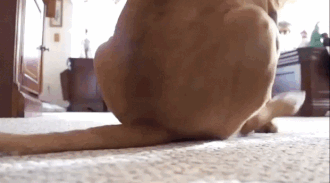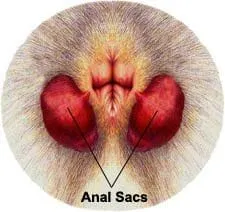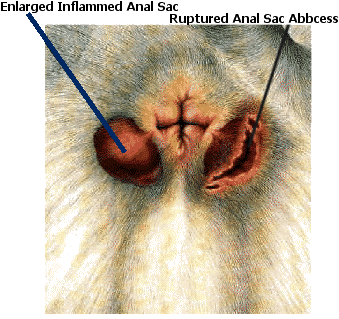
What is an anal sac?

Problems associated with anal sacs include: impaction, infection, abscess, and tumors. Impaction is usually due to blockage of the ducts. The secretion within the impacted sacs will thicken and the sacs will become swollen and distended. It is then painful for your pet to pass feces. The secreted material within the anal sacs forms an ideal medium for bacterial growth. Bacterial infections cause damage resulting in inflammation, pain and itchiness. This condition is similar to hemorrhoids in humans but more painful. If left untreated, an anal gland infection can abscess. Pain increases and sometimes a red, hot swelling will appear on one or both sides of the anus at the site of abscessation. If the abscess bursts, it will release a quantity of greenish yellow or bloody pus. If left untreated, the infection can quickly spread and cause severe damage to the anus and rectum.

Problems with the anal gland are common in all dogs and cats, regardless of size or breed. If you are concerned that your pet may have an anal sac problem, call your veterinarian at once. Treatment for impaction involves flushing and removal of the solidified material. Since this condition is painful, many pets will require a sedative or an anesthetic for this treatment. Antibiotics are often prescribed and sometimes may need to be instilled into the sacs over a period of several days. Most pets will receive pain relief medications for several days until the swelling and pain have subsided. In advanced cases, surgery may be necessary. For some dogs and even some cats, the anal sac may have continued issues making the most humane, efficient, and cost- effective treatment choice surgically removing them.


